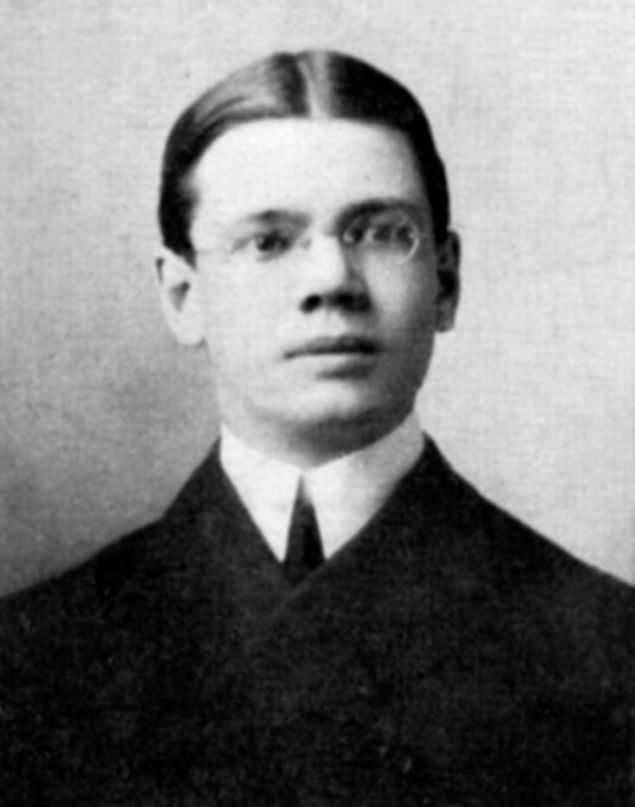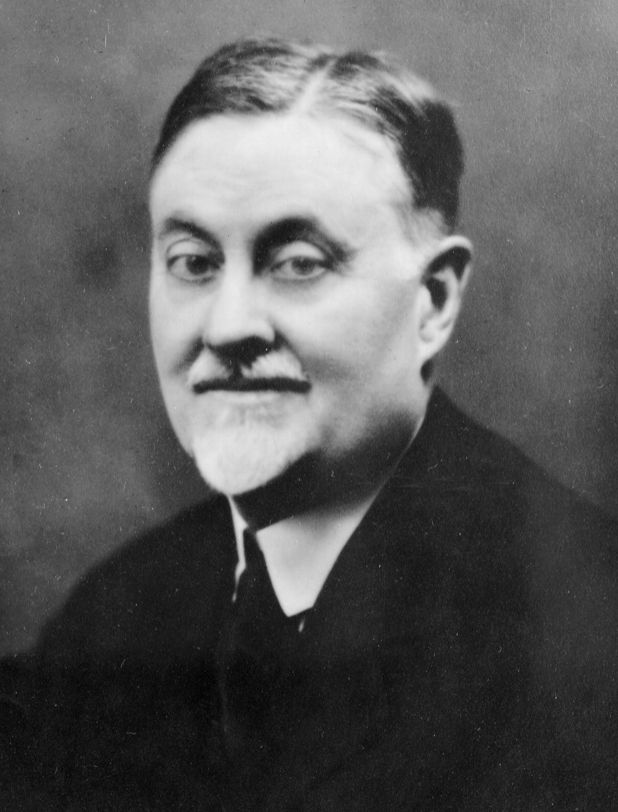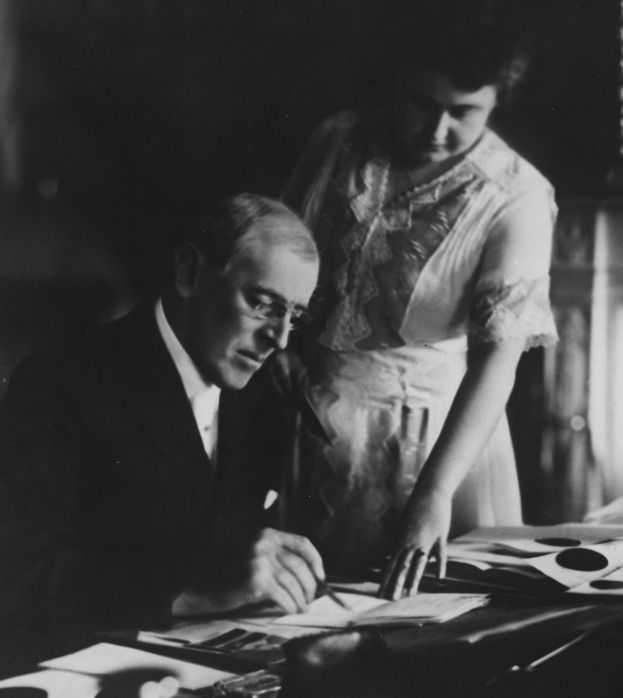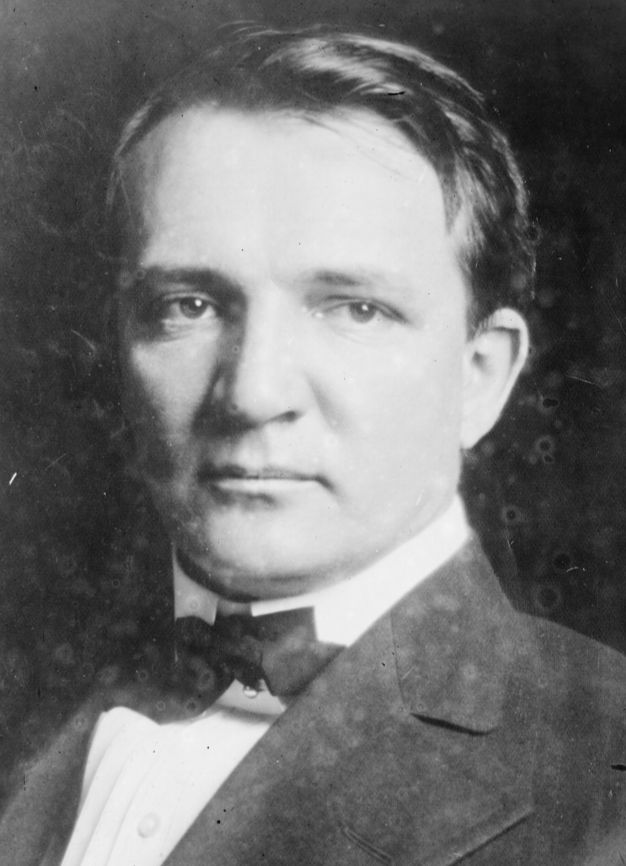The 1917-18 Envoys' Plot and its
consequences in Russia Part One
Description of
persons involved.
Suggested by us in a 2011 comment, variously called Ambassadors'
or Envoys'
Plot and later when the first related British documents were released,
named in the press as the Lockhart-Reilly
and finally misnamed as simple 'the' Lockhart Plot remains the most audacious
spy plot in British and American history, a bold and extremely dangerous operation
to invade Russia, defeat the Red Army, and mount a coup in Moscow against
Lenin. After that, leaders in Washington, Paris, and London aimed to install
their own Allied-friendly dictator in Moscow as a means to get Russia back into
the war effort against Germany.
In The Allied
Intervention in Russia, 1918-1920: The Diplomacy of Chaos published in 2015,
Ian C. D. Moffat charted the Allied
Powers of the First World War’s efforts
to preserve Russian commitment to the war against the German Empire after the
October Revolution, and their attempt to forestall the Brest-Litovsk
Treaty. The author’s use of primary sources provides support to existing
arguments such as the pervasive influence of the first world war on Allied intervention in Russia. But when
Moffat (as others did before him) still argued that the intervention had little
to do with an ideological fight against Bolshevism and was solely rooted in
strategic considerations of World War I, recently discovered archival documents
had come up with some amazing surprises when it was revealed that long before other high-profile plotters such as Bruce Lockhart and
Sidney Reilly came aboard some unusual decisions had already been made.
To understand the
full context, we have to go back to January 1917, demonstrations and mutinies
broke out among the 330,000 soldiers stationed in Petrograd and the suburbs.
The mutinies quickly spread to sailors in the Baltic Fleet. Widespread
dissatisfaction with the status quo that had been building since the Brusilov
Offensive the year before. Later on, some would call the Russian Revolution of
1917 the February Revolution. But the January disturbances were the true
beginning of it all. Some of the troops were anti-war. Others were incensed at
the incompetence of the government and the tsar. Hence Tsar Nicholas II and his
crooked bureaucrats were seen as the main impediments to victory. Rumors spread
about treason in the tsar’s court, and officers
with Germanic names were singled out for suspicion.
During the early
American presence, that time was Xenophon Kalamatiano,
Chapin Huntington, and Charles Crane.
Kalamatiano’s activities in Russia, begins with an examination of a
certain “Chicago group” of Russophiles and information gatherers, businessman
Charles Richard Crane, University of Chicago president William Rainey, and
pictured below Samuel N. Harper, a University of Chicago professor, recruited
Americans to go to Russia as operatives for the U.S. State Department:

US spymaster Kalamatiano is best known when he later was to be arrested
around the same time Bruce Lockhart was. Chapin Huntington held a doctorate in
engineering from the Royal Technical College at Aix la Chappelle, Prussia, and
a mechanical engineering degree from Columbia University. His specialty was
metallurgy, and he was fluent in French, German, and Russian. In Chicago, he
was a commercial agent for the U.S. Bureau of Foreign and Domestic Commerce.
Huntington had arrived in Russia in June 1916 and spent that summer touring and
exploring the country. Now in 1917, he was assigned to the embassy in Petrograd
as a commercial attaché. And Charles Crane (known from the King-Crane Middle
East mission I earlier highlighted) became an
adviser on Russian affairs for Thomas Woodrow Wilson when the president first
took office in 1913. Earlier, Crane had been appointed U.S. minister
“designate” to China by President William Howard Taft.
Charles R. Crane used
his own money to finance private networks of American agents in Russia for
several U.S. presidents, including Wilson:

When later, General
E.A. Vertsinsky, the new commander of the 18th Army
Corps, found that a reserve battalion of the Volyn regiment had rebelled and
taken to the streets during the disorders in Petrograd. The district court
building and the Transfiguration Cathedral were set on fire, and the arsenal
was seized, while General Zabudsky was killed.1
Huntington and Crane made daily reports to the embassy. The reports were coded,
ciphered, and wired by Ambassador Francis to London for relay to Washington.
But the British still had a monopoly on transatlantic cable service, and London censors delayed the traffic before
sending it along. That caused backlogs. The British said they did this to block
information that might be useful to the Central Powers. But Americans suspected
the English were deliberately uncooperative because the United States had not
yet taken sides in the war. London also held up cablegrams sent by U.S.
businesses. That allowed the British to conduct industrial espionage against
America by stealing trade secrets and contracts' details.2
During this period,
Crane continued talking to people in the government and the Duma, acting as an
influence for Washington. His reports went to Ambassador David R. Francis in
Petrograd for relay to Washington. Kalamatiano was
trying to keep his import business afloat. He wasn’t officially working for the
State Department yet but undoubtedly was sharing information as a casual agent.
To avoid
eavesdropping by the British, reports now were increasingly sent to Washington
by diplomatic couriers. They were U.S. Marines wearing civilian clothes. They
took trains across the border into Finland, Norway, or Sweden, and then either
boarded ships for America or transmitted their code reports by wireless. Some
couriers went the other direction, on the Trans-Siberian Railway to
Vladivostok, and handed their reports to new couriers who then sailed for San
Francisco.
American agents in
Russia used the State Department’s Green Cipher. It replaced the old Blue
Cipher after a blue book was stolen from the Petrograd embassy. Codebooks were
similar to dictionaries. They listed words and phrases alphabetically. But
instead of definitions, the book assigned groups of numbers to the selected
words. Then, as added security, the coded numbers were added to groups of
ciphered numbers before being sent. Codebooks could run over 1,000 pages.3
The speed of events
in Russia picked up quickly. The tsar dissolved the Duma. The delegates defied
him and stayed in session around the clock. Kerensky, a lifelong populist
lawyer and leader of the radical left in the Duma, shouted, “Down with the
government!” British agent Bruce Lockhart blamed the tsar’s shutdown on German
agents provocateurs operating in palace circles. Lockhart said they wanted to
provoke a revolution and force Russia into a separate peace with Berlin.4
Kerensky, too, charged that the palace was infiltrated by German agents.5 The
Duma formed an executive committee and set up the Russian Provisional
Government. An opposition group, the Soviet of Workmen’s and Soldiers’
Deputies, aka the Petrograd Soviet, was created to compete with the provisional
government. Soviets (workers’ councils) were first formed in factories during
the 1905 revolution to make demands against the government. Lev (Leon)
Davidovitch Trotsky was one of the early organizers. His 1905 Soviets included
a motley crew of radicals, including Mensheviks, Bolsheviks, anarchists, and
Socialist Revolutionaries (SRs). The SRs were formed in 1902 as a terrorist
alternative to the Social Democrats (SDS). The SRs believed that peasants, not
urban workers, were the revolutionary class.
Soon Nicholas II had
lost the support of his soldiers, his people, and his parliament. Now some of
his top officers staged a quiet coup. It happened on a bitterly cold night as
Nicholas returned from Stavka to Tsarskoye Selo, his beloved country home. His
train was diverted to Pskov, a small station southeast of Petrograd, near the
Estonian border. There, rebellious soldiers surrounded the train in the deep
snow. A group of the tsar’s generals entered his car for a talk. They advised
him that Petrograd was in a state of anarchy. It would do no good to send in
more troops, for they would go over to the revolutionaries. “Then what is to be
done now?” he asked. Alexander Ivanovich Guchkov, a
former chairman of the Third Duma (1907–1912), replied, “You must abdicate, te the throne.”
Suddenly Nicholas was
a dead man whose friends had followed him to the grave, but not into it with
him. He was all alone, with no more sycophants to assure him that he possessed
the greatest military mind since Caesar. He took a walk outside on the station
platform, then returned to his car and signed two abdication documents. The
first turned the crown over to his son, Alexis. Then he changed the abdication
in favor of his brother, Grand Duke Michael. But Michael refused the throne.6
With that, 305 years of rule by the Romanovs ended. Guchkov
was arrested that night by workers who thought he was part of the tsar’s inner
circle.
The existing Fourth
Duma proclaimed the country was now the Russian Revolutionary Republic. The new
Russian Provisional Government scheduled elections for a constituent
(constitutional) assembly to meet and decide what kind of political system the
country would have in the future. Within two weeks, U.S. Ambassador Francis
gave official diplomatic recognition to the fledgling new nation. France,
Italy, and Britain soon followed.
The provisional
government, when the status of the monarchy was still unresolved, sent a
manifesto urging the soldiers to hold the line against Germany and defend
Russia’s new freedoms. “Yes, we will!” the soldiers shouted. But then they
received the infamous Order No. 1 from the Petrograd Soviet. It abolished all
army titles. Officers were to be disarmed.
When Lenin arrived,
one of the faces in the crowd that April night in Petrograd was that of Boris
Viktorovich Savinkov, who had arrived at the station simultaneously as Lenin.
Savinkov was a professional terrorist who used to belong to the Socialist Revolutionary
Party, aka the SRs.7 Now, he was an independent SR with his own agenda aimed at
both monarchists and Bolsheviks. Lenin did not later mention having seen
Savinkov at the station. But Boris, a vain man, was reportedly offended because
the crowd was not there to greet his return from exile.
In fact, one could
say that the SRs, not the monarchists, the Mensheviks,
or the anarchists, were the Bolsheviks’ main enemy in Russia. (Cossacks came in
a close second.) So, it was no secret that Savinkov was gunning for Lenin.
Boris saw it as a duel to the death. Boris carried a Browning pistol, so why
didn’t he shoot Lenin that night? That would have been a quick way of
preventing a Bolshevik coup.
The answer probably
lay in Savinkov’s style of assassination. He was a meticulous assassin. He
spent weeks researching his target’s movements in advance, and carefully
planned the hit at just the right time. Lenin’s unexpected arrival that night
caught him off guard. Also, Savinkov preferred to use a bomb in killing but
apparently didn’t have one on hand that night. Nor did he have a team in place.
He had to let it go for the time being. He would find other chances later.
Al the while, The US
remained neutral vis a vis the war with Germany demands war increased with the
sinking of five American ships, the Vigilancia, the
City of Memphis, Illinois, the Healdton, and the Algonquin, by German
submarines. Twenty-one Americans died when the Healdton went down.8 But the
straw that broke the camel’s back was the infamous Zimmermann
telegram.
Then after America
was in the war. Wilson recognized the need to keep Russia in it, too. First,
there was a strategic need to keep the Russian fronts intact. That would force
the Central Powers to continue fighting in two theatres.
Second, he had economic
reasons for turning his attention to Russia. When war broke out, America was a
debtor nation still reeling from the recession of 1913–1914. But a big recovery
took off as the United States started selling goods to the European
belligerents. Then, in 1917, after the war was declared, Washington began
awarding its own military contracts. Factories that once manufactured
automobiles and stoves now made guns and trucks. Millions of women joined
production lines as men went off to fight. Some 3 million jobs were added to
the military, and 500,000 in the federal bureaucracy. The national jobless rate
dropped to 1.4 percent. Most of the war’s financing was met not by running up
huge deficits but by selling war bonds (for 58 percent of the cost) and raising
taxes (22 percent).9
Wilson also figured
the United States, with 103.2 million, would be packed with surplus goods after
the war.10 To prevent America from sliding back into recession, he wanted to
sell those surplus products overseas like in Russia... Russia would be a prime
market for American cars, locomotives, blue jeans, sneakers, jazz records,
Western movies, and cigarettes. Officially, Wilson’s closest adviser in his
developing Russian policy was Secretary of State Lansing. The unofficial voices
were those of Charles Crane and Wilson’s old friend Edward Mandell House. But
another influence was closer to him than all of those. That was his second
wife, Edith Wilson.
She was the
president’s companion day and night, and his closest political adviser. She was
the only person in the White House who held Wilson’s special presidential code,
which he used outside official channels for top-secret messages to embassies,
consulates, and military missions. She ciphered and deciphered his signals and
advised him on his wartime decisions. The press called her the “secret
president.” Telephone and telegraph equipment was installed across the Oval
Office hall in the West Wing and became Wilson’s war room, staffed by around
seventy clerks. Members of Wilson’s administration dropped in at all hours to
read the latest reports from the fronts. Edward House, Wilson’s chief foreign
affairs adviser, became increasingly unwelcome. The first lady didn’t like
House, evidently because of his closeness to Wilson. She began to cut off
House’s access to the president. That left Wilson and Lansing as the primary
influence.
President Woodrow
Wilson (seen with his wife Edith Wilson) authorized the American war against
Soviet Russia and approved a secret plot in Moscow to depose Lenin and his
government:

An American military
mission was opened in Petrograd to advise the provisional government on battle
tactics. Other missions had been opened earlier by the French and British.
Chief of the U.S. mission was Brigadier General William Voorhees Judson, a fifty-two-year-old
graduate of West Point and the army’s engineer school. Judson had worked on
river, harbor, and canal projects in Illinois, New York, and Texas, and was a
consultant on the Panama Canal. He had also been a military attaché to the
Russian Imperial Army during the Russo-Japanese War. Judson would later prove a
controversial figure in what became to be known as the Ambassadors' Plot.
Initially, the
Americans send the so-called Root Commission, whose members individually
supported the 1917 revolution, as did President Wilson and Secretary of State
Lansing. But General Scott wondered why Kerensky didn’t do something about the
Bolsheviks. They were threatening the revolution and the continuance of the
war. British adviser General Knox had a simple solution: shoot them, shoot all
the Bolsheviks.11
While the Root
Commission was in Russia, the provisional government asked for an additional
$75 million ($1.460 billion today) to pay army salaries. The money was approved
in Washington.12 It would also be used to buy rifles and ammunition, artillery,
and shells. Even before then, Westinghouse had signed a contract to manufacture
1.8 million Russian rifles at the cost of $48 million ($935 million today).13
Humanitarian assistance was coming from the American National Red Cross, the
commander of which Major(not yet Colonel) Raymond Robins would turn out to be
one of the top spies in the Plot.
Enter Raymond Robins
In the past, Russian
history had been recorded patiently, with a new book written every few years or
so. Now every day in Russia was an emergency. A new chapter was penned every
week. Lansing recognized that if the Allies wanted Russia to support the war
effort, they would have to do something besides the usual routine of viewing
events with concern. In his new position as secretary of state, Lansing could
do something daring, something radical.
Raymond Robins was
forty-five years old when he arrived in Petrograd. He confidently and
determinedly conducted himself, leading Bruce Lockhart to compare him to an
Indian chief with a Bible for a tomahawk. Raymond’s commanding officer was
Colonel William Boyce Thompson.
When Thompson heard
that a Raymond Robins had reported in, he stood up from his desk. “Major
Robins? Raymond Robins, that uplifter, that Roosevelt shouter? What is he doing
on this mission?”
As Robins explained
it later in testimony before Congress, “You could not get two persons more
absolutely alien in all past associations and habits of thought than Colonel
William B. Thompson and me. He was a stand-patter. He was the friend of those
whom I had fought in American politics. He was in association with the large
financial interests of the country.”
Major Robins referred
to some that the American Red Cross mission to Russia was a front for Wall
Street. In those days, armies did not have big medical services. The Red Cross
in each country sent its own doctors, nurses, and ambulances to the front lines.
They picked up wounded from the battlefields and performed surgery on them at
dressing stations and Red Cross hospitals. Then they helped them in their
rehabilitation. But the American Red Cross was low on funds. They needed
subsidies. Those were provided by big corporations, including Chase National
Bank, International Harvester, National City Bank, Liggett & Myers, and
Swift & Company. Some said those Wall Street companies used the Red Cross
mission as an “operational vehicle” in Russia to plot future financial
influence in the country.14
But despite their
differences, Major Robins recognized that Colonel Thompson had “that thing that
is common in America among successful businessmen… an outdoor mind, a mind that
does not take chatter, that constantly reaches out for facts, that has had to
do that to be successful in business.”
An example of indoor
minds today would-be politicians who think from “inside the Beltway” and refuse
to listen to their constituents. In Revolutionary Russia, Robins said, the
indoor thinkers were the sheltered, privileged Russian bourgeoisie. They were “the
richest and most attractive and delightful persons you will meet anywhere,
interested in education, in art, in literature, in the ballet, in the opera, in
painting, in fine large, expensive things, but utterly incompetent.”
Raymond’s list of
incompetents included Kerensky and the Russian Provisional Government. They had
little personal contact with workers or peasants, Robins said. Kerensky ran a
“paper government” ruled by decrees issued from the top, similar to today’s presidential
executive orders and regulations, by unelected bureaucrats. Once Robins and
Thompson agreed on that, their two outdoor minds began to work together.
Major Robins started
recruiting spies in the Russian army to report on the Bolsheviks. Soon he was
running agents at the front lines and in barracks back in Petrograd.
Pictured below Robins ran one of the most effective
U.S. spy networks in Revolutionary Russia:

Washington and London
had been planning a joint intelligence operation in Russia since June 1917,
when Edward House discussed the subject with Lieutenant Colonel William George
Eden Wiseman, head of the British Secret Service in America. That was before the
Bolshevik coup when the main focus was on countering German designs in Russia.
After that meeting with Wiseman, House talked to Lansing, and Lansing talked to
Wilson. The president okayed the new cooperation project.15 Wiseman would soon
recruit a top British spy to work against the Bolsheviks for Wilson.
At this time, the
French were operating independently against the Bolsheviks and the Germans in
Russia, but would soon team up with the Americans and British. Meanwhile,
Washington and London moved quickly to send in spies, his time, professionals.
It must have seemed
like a good idea at the time: Overthrow Lenin and the Soviet government on
humanitarian, military, and economic grounds and install a benevolent dictator
in Moscow until a democratic government could be elected...
The 1917-18 Envoys' Plot and its consequences
in Russia Part Two
The 1917-18 Envoys' Plot and its consequences
in Russia Part Three
The 1917-18 Envoys' Plot and its consequences
in Russia Part Four
The 1917-18 Envoys' Plot and its consequences
in Russia Part Five
The 1917-18 Envoys' Plot and its consequences in Russia Part Six
The 1917-18 Envoys' Plot and its consequences
in Russia Part Seven
1. E.A. Vertsinsky, “Year of the Revolution: Memoirs of an Officer
of the General Staff, 1917–1918,” RGR project.
2. Robert Lansing,
War Memoirs of Robert Lansing, Secretary of State. New York: Bobbs-Merrill,
1935,124–25.
3. Ralph E. Weber,
United States Diplomatic Codes and Ciphers, 1775–1938 (Chicago: Precedent
Publishing, 1979), 246–48.
4. Robert Bruce
Lockhart, The Diaries of Sir Robert Bruce Lockhart, 1915–1938, entry of
Thursday, 16 September 1915 (London: Macmillan, 1973), 24–25.
5. Kerensky,
Alexander. Russia and History’s Turning Point. New York: Duell, Sloan and
Pearce, 1965, 160.
6. FINAL SCENE WITH
THE TSAR: A MIDNIGHT INTERVIEW, Manchester Guardian, March 18, 1917, account
given by a member of the executive committee of the Duma; GENERAL RUSSKY’S
ACCOUNT OF THE CZAR’S ABDICATION, Current History, vol. 13 (1917), 272–74, a
description by General Nicholas V. Russky, the Russian army’s chief
representative in abdication talks with Nicholas.
7. The full name was
the Party of the Socialist Revolutionaries. But the common initialism SR is
most used.
8.“American Ship
Casualties of the World War,” Naval History and Heritage Command, at
http://www.history.navy.mil. The tanker Healdton was sunk on March 21, 1917,
north of the Netherlands.
9. Hugh Rockoff, “The
Economics of World War I,” Working Paper 10580, the National Bureau of Economic
Research, Cambridge, MA, http://www.nber.org.
10.“Historical
National Population Estimates,” U.S. Census Bureau, 1918,
http://www.census.gov.
11.Raymond Robins
testimony as quoted in the testimony of Samuel N. Harper, Bolshevik Propaganda
Hearings Before a Subcommittee of the Committee on the Judiciary, United States
Senate, Sixty-fifth Congress, third session, February 11, 1919, to March 10, 1919
(Washington: Government Printing Office, 1919), 94. The subcommittee chair was
Senator Lee Overman of South Carolina, 780. Hereafter referred to as Overman.
12. Alton Earl
Ingram, “The Root Mission to Russia, 1917” (Baton Rouge: Louisiana State
University Historical Dissertations and Theses, 1970),187–88
www.digitalcommons.lsu.edu. Monetary inflation calculations come from Morgan
Friedman, www.westegg.com.
13. Norman E. Saul,
The Life and Times of Charles R. Crane, 1858–1939 (Lanham, MD: Lexington Books,
2013), 130.
14. Antony C. Sutton,
Wall Street and the Bolshevik Revolution (West Hoathly,
England: Clairview Books, 2001), Chapter V, “The
American Red Cross Mission to Russia–1917,” online at
http://www.reformed-theology.org.
15. Lansing to
Wilson, June 8, 1917, The Papers of Woodrow Wilson, ed. by Arthur S. Link,
(Princeton: Princeton University Press, 1966), 42:463.
For updates click homepage here